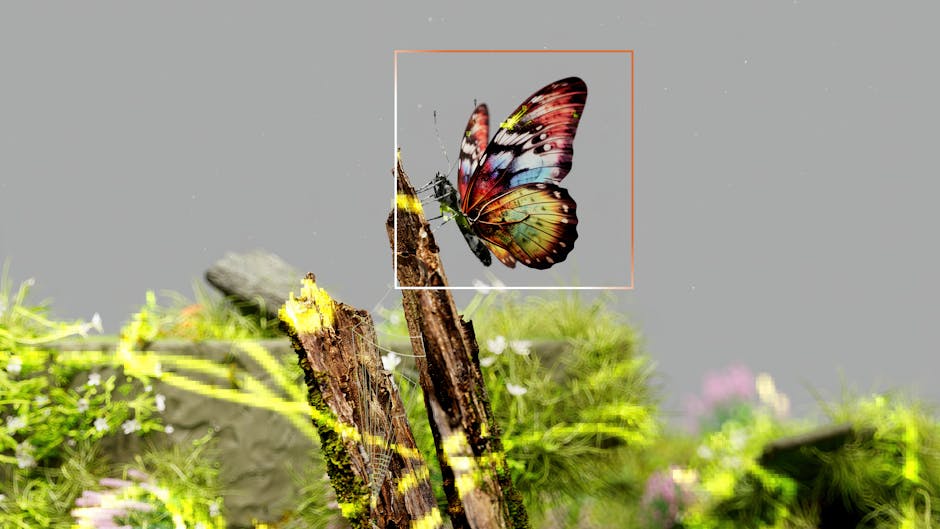Nutrition education through STEM learning has emerged as a powerful approach to transform how we understand and make dietary choices in 2025. This integration of science, technology, engineering, and mathematics with nutrition education creates a comprehensive framework that empowers individuals to make informed decisions about their health. By applying STEM principles to nutrition, we can better understand the biochemical processes of digestion, use technology to track nutritional intake, engineer better food systems, and mathematically analyze dietary patterns for optimal health outcomes.
The Evolution of Nutrition Education in STEM Curriculum

Photo by Mikhail Nilov on Pexels
Nutrition education has undergone a remarkable transformation in recent years, evolving from simple food pyramid diagrams to sophisticated, evidence-based approaches that incorporate all aspects of STEM learning. In 2025, educators are increasingly recognizing that teaching nutrition through a STEM lens offers students a more comprehensive understanding of how food affects their bodies and overall health.
Traditional nutrition education often focused solely on memorizing food groups and recommended daily allowances. However, modern STEM-based nutrition education delves deeper into the why and how of nutrition science. Students now learn about cellular metabolism, the biochemical pathways of nutrients, and how different foods interact with human physiology. This scientific foundation helps learners understand nutrition not as a set of arbitrary rules but as logical consequences of human biology.
Technology has revolutionized how nutrition education is delivered in classrooms. Interactive simulations allow students to visualize nutrient absorption in the digestive system. Virtual reality experiences take students inside cells to witness how macronutrients are processed. Artificial intelligence and personalized learning platforms adapt nutrition content to individual learning styles and knowledge gaps, making the educational experience more effective and engaging.
Engineering concepts are applied when students design meal plans that meet specific nutritional requirements while considering constraints like budget, availability, and cultural preferences. This problem-solving approach teaches critical thinking skills that extend beyond nutrition into other areas of life and learning.
Mathematical analysis forms the backbone of nutrition education through STEM, as students learn to calculate caloric needs, analyze nutrient density, and understand statistical studies on diet and health outcomes. These quantitative skills enable evidence-based decision-making about dietary choices rather than relying on fads or marketing claims.
The integration of nutrition education with STEM has created a more holistic approach that prepares students not just to make healthier food choices but to understand and critically evaluate nutrition information throughout their lives.
Artificial Intelligence and Personalized Nutrition Planning

Photo by Photo By: Kaboompics.com on Pexels
Artificial intelligence has revolutionized nutrition education and dietary planning in 2025, creating unprecedented opportunities for personalized approaches to healthy eating. AI-powered nutrition platforms now analyze individual health data, genetic information, microbiome composition, and lifestyle factors to create truly customized dietary recommendations that optimize health outcomes.
Machine learning algorithms can process vast amounts of nutritional research and clinical data to identify patterns and correlations that human nutritionists might miss. These systems continuously learn from new research and individual user feedback, constantly refining their recommendations to improve efficacy. For example, AI systems can now predict how an individual’s blood glucose will respond to specific food combinations, allowing for meal plans that minimize unhealthy spikes.
Personalized nutrition through AI has moved beyond simple calorie counting to consider the complex interplay of nutrients, timing, and individual physiology. These systems can account for factors like chronobiology (optimizing when to eat certain foods based on your body’s internal clock), stress levels, sleep quality, and even environmental factors that might affect nutrient needs.
In educational settings, AI-driven nutrition platforms serve as powerful teaching tools that demonstrate the scientific principles behind dietary recommendations. Students can experiment with virtual meal planning and see simulated health outcomes based on different choices, making abstract nutritional concepts concrete and personally relevant.
The integration of AI with wearable technology has created feedback loops that continuously monitor physiological responses to foods and adjust recommendations accordingly. Smart devices can now detect subtle changes in biomarkers that indicate how well your body is processing certain nutrients, allowing for real-time dietary adjustments.
While AI offers tremendous benefits for nutrition education and planning, educators and health professionals emphasize the importance of maintaining critical thinking skills. Students are taught to understand the algorithms behind AI recommendations and to evaluate them against established nutritional science, ensuring that technology enhances rather than replaces human judgment in making dietary choices.
Virtual and Augmented Reality in Nutritional Understanding

Photo by Vlada Karpovich on Pexels
Virtual and augmented reality technologies have transformed nutrition education in 2025 by creating immersive, experiential learning environments that make complex nutritional concepts visible and tangible. These technologies bridge the gap between abstract scientific knowledge and practical application, allowing learners to visualize processes that would otherwise remain invisible.
Virtual reality simulations now enable students to take fantastic voyages through the human digestive system, watching in real-time as different foods are broken down and nutrients are absorbed into the bloodstream. These immersive experiences create powerful memory anchors that help learners retain information about digestive physiology and nutrient metabolism far more effectively than traditional textbook learning.
Augmented reality applications overlay nutritional information onto real foods, creating interactive learning experiences in everyday environments. Using AR glasses or smartphone apps, students can point at foods to instantly see detailed nutritional profiles, including macronutrient content, micronutrient density, and how these values compare to daily requirements. Some advanced AR systems even visualize the potential health impacts of different food choices, showing how nutrients support various bodily functions.
In classroom settings, VR and AR technologies facilitate collaborative learning experiences where students can manipulate virtual food molecules, construct meal plans in 3D space, and conduct simulated experiments on nutrient interactions. These hands-on activities develop critical thinking skills and scientific literacy while maintaining high levels of engagement and motivation.
For practical skill development, VR cooking simulations allow learners to practice preparing nutritious meals in virtual kitchens before attempting them in real life. These simulations can be adjusted for different skill levels and can demonstrate the scientific principles behind cooking methods that preserve nutrient content.
Healthcare professionals have embraced these technologies for patient education, using personalized VR experiences to illustrate how specific dietary changes might affect individual health conditions. Visualizing the progression of health improvements over time helps motivate patients to maintain beneficial dietary changes.
As these technologies continue to evolve, they’re increasingly incorporating multisensory elements, including simulated taste and smell, to create even more comprehensive learning experiences that address all aspects of nutrition education through STEM.
Cloud Computing and Collaborative Nutrition Research

Photo by Google DeepMind on Pexels
Cloud computing has revolutionized nutrition research and education in 2025 by enabling unprecedented collaboration, data sharing, and computational power. This technological advancement has democratized access to nutrition information and research tools, creating a more inclusive and comprehensive approach to understanding the science of food and health.
Large-scale nutrition databases now exist in the cloud, containing detailed information about thousands of foods, their nutrient compositions, bioactive compounds, and even regional variations. These comprehensive repositories allow researchers and educators to access standardized, high-quality data from anywhere in the world. Students can query these databases to analyze dietary patterns across different populations or to investigate relationships between specific nutrients and health outcomes.
Cloud-based collaborative platforms enable nutrition scientists from diverse geographical locations to work together on complex research projects. These platforms facilitate the sharing of methodologies, results, and insights in real-time, accelerating the pace of discovery in nutritional science. For example, researchers studying the effects of different dietary patterns on gut microbiome composition can pool their data to identify patterns that might not be apparent in smaller, isolated studies.
The computational power of cloud systems has made sophisticated nutritional modeling possible, allowing researchers to simulate how different dietary interventions might affect health outcomes at both individual and population levels. These models incorporate multiple variables, including genetic factors, environmental influences, and lifestyle components, creating a more holistic understanding of nutrition’s role in health.
In educational settings, cloud computing has enabled the development of virtual nutrition laboratories where students can conduct simulated experiments without the need for expensive equipment. These virtual labs allow learners to manipulate variables, observe outcomes, and develop hypotheses about nutritional science in a safe, controlled environment.
Citizen science initiatives leveraging cloud technology have emerged as powerful tools for nutrition education and research. These projects invite the public to contribute dietary data through mobile apps and wearable devices, creating vast datasets that researchers can analyze to identify patterns and trends. Participating in these initiatives helps individuals develop data literacy skills while contributing to scientific knowledge.
As cloud computing continues to evolve, it’s increasingly incorporating artificial intelligence to analyze the massive datasets being generated, identifying correlations and potential causal relationships that might inform more effective nutrition education and public health strategies.
Integrating Nutrition Science with Practical Cooking Skills

Photo by RDNE Stock project on Pexels
The integration of nutrition science with practical cooking skills represents one of the most significant advancements in STEM-based nutrition education in 2025. This approach bridges the gap between theoretical knowledge and practical application, empowering individuals to translate scientific understanding into healthful daily choices in their own kitchens.
Modern nutrition education now emphasizes the biochemistry of cooking, teaching students how different preparation methods affect the nutritional profile of foods. Learners discover how heat transforms proteins, how acid denatures enzymes, and how various cooking techniques can either preserve or diminish vitamin content. This scientific understanding helps individuals make informed decisions about food preparation that maximize nutritional benefits.
Culinary nutrition labs have become standard features in educational settings, equipped with both cooking facilities and scientific instruments. In these spaces, students might prepare a vegetable using different methods, then analyze the resulting nutrient content using spectroscopy or other analytical techniques. This hands-on approach reinforces scientific concepts while developing practical skills that students can use throughout their lives.
The science of flavor has emerged as a crucial component of nutrition education, as researchers have recognized that nutritional value alone isn’t sufficient to change eating habits. Students learn about the chemistry of taste perception, how different flavor compounds interact, and how to use this knowledge to create nutritious meals that are also delicious and satisfying. This approach acknowledges that healthy eating must be sustainable and enjoyable to be effective.
Food preservation techniques are taught from both cultural and scientific perspectives, examining traditional methods like fermentation alongside modern approaches. Students learn how these techniques affect nutrient availability, microbial safety, and environmental impact. This interdisciplinary approach connects nutrition science with cultural heritage, sustainability, and food security.
Problem-based learning scenarios challenge students to develop meal solutions for specific health conditions or nutritional requirements. These exercises require applying scientific knowledge about nutrient interactions, bioavailability, and metabolism while considering practical constraints like cost, preparation time, and cultural appropriateness.
Technology supports this integration through apps and platforms that provide real-time guidance during cooking, explaining the scientific principles behind each step and suggesting modifications to enhance nutritional value. Some advanced systems use sensors to monitor cooking conditions and provide feedback to optimize both taste and nutrition.
Measuring and Evaluating Nutrition Education Outcomes

Photo by Nick Collins on Pexels
As nutrition education through STEM has evolved, so too have the methods for measuring and evaluating its effectiveness. In 2025, sophisticated assessment approaches combine quantitative and qualitative measures to provide a comprehensive understanding of how well educational interventions improve nutritional knowledge, attitudes, and behaviors.
Data-driven assessment has become the foundation of nutrition education evaluation. Digital platforms track multiple metrics, including knowledge retention, skill development, and behavioral changes over time. These systems use adaptive algorithms to identify areas where learners struggle and automatically adjust content to address these challenges. The resulting data allows educators to continuously refine their approaches based on evidence rather than assumption.
Biomarker monitoring has emerged as a powerful tool for evaluating the physiological impact of nutrition education. Non-invasive technologies now allow for regular assessment of key health indicators like blood glucose patterns, inflammatory markers, and micronutrient status. These objective measures provide concrete evidence of how educational interventions translate into biological outcomes, creating powerful feedback loops for both educators and learners.
Behavioral economics frameworks help researchers understand the complex decision-making processes that influence dietary choices. By analyzing how nutrition education affects these decision pathways, educators can design more effective interventions that address both conscious knowledge and unconscious biases or habits. This approach recognizes that information alone is rarely sufficient to change behavior.
Longitudinal studies tracking the impact of STEM-based nutrition education over years or even decades provide valuable insights into its long-term effectiveness. These studies examine not only persistent dietary changes but also broader health outcomes, academic performance, and even career choices. The emerging evidence suggests that comprehensive nutrition education has far-reaching benefits beyond immediate health improvements.
Community-based participatory research methods ensure that evaluation approaches are culturally appropriate and relevant to diverse populations. These collaborative methods involve community members in designing evaluation metrics that reflect local values and priorities, creating more meaningful assessments of program effectiveness.
Meta-analysis of multiple evaluation studies has helped identify the most effective components of nutrition education programs. This research synthesis suggests that programs combining scientific knowledge with hands-on skills, addressing environmental and social factors, and providing ongoing support are most likely to produce lasting positive outcomes.
Future Directions: Emerging Trends in Nutrition Education

Photo by Mikael Blomkvist on Pexels
As we look beyond 2025, several emerging trends are poised to further transform how nutrition education is integrated with STEM learning. These innovative approaches promise to create even more personalized, effective, and accessible ways to understand and apply nutritional science for optimal health.
Quantum computing applications in nutrition science represent one of the most exciting frontiers. These powerful computing systems will enable the modeling of complex biochemical interactions at unprecedented levels of detail, potentially revolutionizing our understanding of how nutrients interact with individual genetic profiles. Educational platforms will likely incorporate simplified versions of these models to help students visualize and understand these complex interactions.
Microbiome-centered nutrition education is gaining momentum as research continues to reveal the profound impact of gut bacteria on overall health. Future educational approaches will likely place greater emphasis on understanding how dietary choices shape the microbiome and how these changes affect everything from immune function to mental health. This systems biology approach represents a significant shift from traditional nutrient-centered education.
Planetary health perspectives are increasingly being integrated into nutrition education, acknowledging the interconnections between human health, environmental sustainability, and food systems. Future curricula will likely place greater emphasis on understanding these relationships, teaching students to make dietary choices that support both personal and planetary wellbeing. This approach aligns nutrition education with broader sustainability goals and ecological literacy.
Neuroscience-informed teaching methods are being developed based on growing understanding of how the brain processes and retains information about food and nutrition. These approaches optimize learning by aligning educational experiences with natural cognitive processes, potentially making nutrition education more intuitive and memorable.
Cross-disciplinary integration is expanding beyond traditional STEM subjects to include arts, humanities, and social sciences in nutrition education. This holistic approach recognizes that food choices are influenced by cultural, economic, and psychological factors as much as by scientific knowledge. Future educational models will likely embrace this complexity, creating truly transdisciplinary approaches to nutrition literacy.
Ethical considerations in nutrition science are becoming increasingly important as technologies like genetic modification and personalized nutrition raise complex questions about access, privacy, and cultural values. Future nutrition education will likely incorporate more explicit discussion of these ethical dimensions, helping students develop frameworks for navigating these challenging issues.
As these trends continue to evolve, nutrition education through STEM will likely become even more personalized, evidence-based, and holistic, empowering individuals to make informed choices that support both individual and collective wellbeing in an increasingly complex food environment.
Sources
- https://marzanoresearch.com/hot-topics-in-education-2025/
- https://www.vhslearning.org/blog/10-influential-education-blogs-and-influencers-to-follow-in-2025
- https://bloggers.feedspot.com/science_teacher_blogs/
- https://www.nsta.org/blog
- https://blog.allstemconnections.com/general/top-10-stem-trends-to-follow-in-2025/

